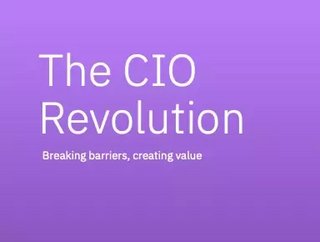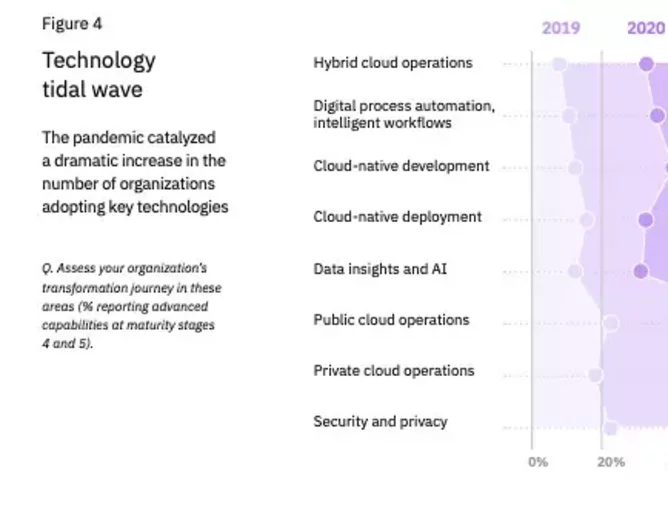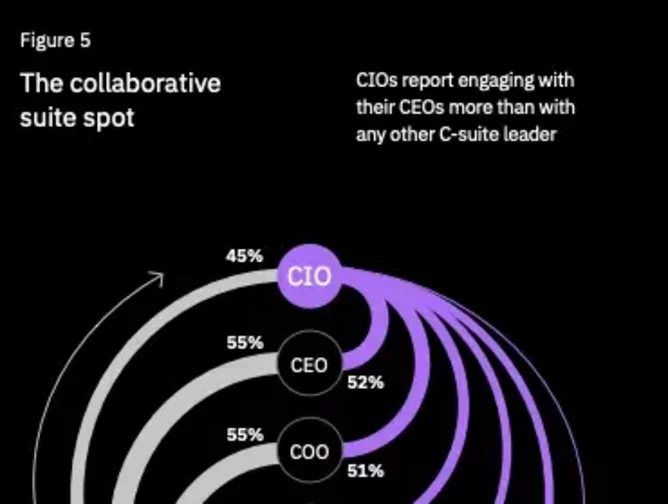IBM study: CIOs expected to help drive business growth

The influence of the Chief Information Officer (CIO) on business strategy and operations is growing exponentially, according to a new IBM Institute for Business Value (IBM) study.
The study, which surveyed 5,000 C-suite technology leaders (CIO/CTO), as well as execs, revealed that more than half of CIOs rank themselves as a critical enabler of business vision, collaborating with colleagues to meet fast-changing demands and driving value throughout their enterprises and beyond. This is compared to just 1 in 5 CIOs who ranked themselves as critical a decade ago.
And the story is the same from CEOs. When asked which other C-Suite members will be most critical over the next few years, CEOs named their tech chiefs (CIOs and CTOs) at more than twice the rate of CMOs, CHROs or any other position excluding CFO and COOs.

Role of technology in post-pandemic age
Hardly surprising, considering how the pandemic has accelerated the need for AI and hybrid cloud applications to power business-critical processes leading to the technology function becoming more vital than ever to ongoing business success and relevance.
Research finds that since 2019, there has been a 700% increase in hybrid cloud operations, 560% increase in digital process automation and intelligent workflows, 467% increase in cloud-native deployment, and 292% increase in data insights and AI. And CIOs report that 20-40% of organisational business processes have been automated.
"In our post-pandemic era, the role of technology has never been more critical and it's up to CIOs to influence strategy, break down internal silos, and drive agility and innovation across every part of the business,’ says Kathryn Guarini, chief information officer, IBM.

Changing role of the CIO
Once a CIO’s role was just about delivering technology for IT projects. Now, it is this and more. While CIOs continue to deliver core IT services that power day-to-day business operations, they are also often expected to help drive innovation and business growth, delivering business and customer outcomes through joint collaboration.
CIOs have become “part of the group that defines and determines the transformation of companies”, says Banorte’s CIO, Fernando Trevino Elizondo.
Reflecting their increasingly strategic role, 52% of CIOs report engaging with their CEOs more than they do with any other C-suite leader.
“The idea that the business leads technology strategy is now obsolete,” observes Laura Money, CIO at Sun Life Financial. “Business strategy is developed in partnership with our technology strategy – as we share a common goal of putting clients first and making it easier to do business with us digitally.”
Many CIOs emphasise the importance of data and automation to break down siloes and create new value streams. The number of CIOs reporting high maturity in AI-enabled workflows increased 560% compared to two years ago, and 37% of CIOs cite process automation as the top opportunity for positive impact within their organisations.
CIOs are also looking to use technology to drive progress against corporate objectives like sustainability with 42% expecting technology to have a significant impact on sustainability in the next three years – that’s the highest of all areas of impact.
Challenges for CIOs moving into 2022
Lack of collaboration with CTOs and underestimating the difficulties of ongoing hybrid workplaces are among challenges CTOs have on their plate.
1. Collaboration at the crossroads Many CIOs are increasingly serving as a bridge across other business functions, connecting the dots to balance and rearrange technology resources and capabilities to drive agility and efficiency. Within the walls of the technology function itself, however, only 4 in 10 CIOs surveyed report they frequently interact with CTOs, despite the fact that effective collaboration can drive financial benefits. The consequences of this disconnect can be significant – if CIOs and CTOs are using data and AI for different use cases without coordination across culture, processes and tools, the organisation may lack a cross-company view and ability to govern critical data properly.
Arun Aggarwal, SVP, Business Technology for Finland-based energy company Fortum, recognises the need to align both intent and incentives, explaining: “In collaborating with other tech leaders, there needs to be absolute clarity of purpose. That means a clarity of mission and no duplication across functions. You have to be aligned on financial and operational incentives.”
2. Underestimation of challenge of ongoing hybrid workplace
The majority of CIOs say they implemented remote work strategies, and yet just 23% expect this to become permanent. In contrast, nearly two in three employees report they would prefer to work remotely or in a hybrid model. This indicates a potential blind spot for CIOs and in this era of ‘The Great Resignation', the CIO's ability to adopt effective technology applications and productive collaboration strategies for the workforce could make a significant difference in the war for talent.
The study includes recommendations from IBM for leaders on embracing hybrid cloud approach and AI technology to help drive enterprise agility, innovation and growth and how to bridge the divide with the CTO.






